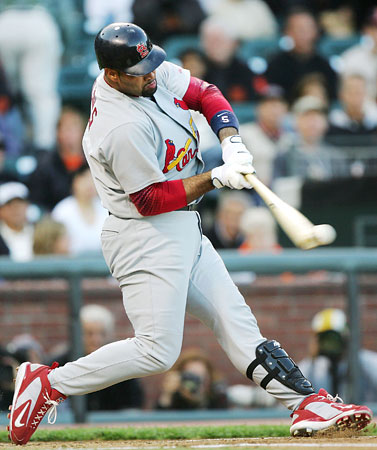QUOTE] Barrel above the ball??? Wouldn't that be missing the ball? Keeping the front elbow up on pitches up is the way to hit pitches up. [/QUOTE]
Missing the ball? Jeez, I thought this was a hitting thread.
quote:
Please explain "backspinning a ball." Technique to do it. Drills coached to do it.
Nothing more than hitting off a tee. Tommy Hernandez demonstrated at a coaches clinic at Arc Park in the late 90's that I attended. When you hit off a tee. Simply place the ball where thin seams "2-seams" face outward and very slightly upward toward the hitter. The idea is to strike between the thin seams at a ever so slight downward angle go thru the baseball and come out in the middle of the round seams on the backside. Thus never touching any seam on the ball until you come out on the backside.......It's all hypothetical, but we have found thru the years that it gives young hitters a concept of how to hit off a tee, stay inside the ball and not touch the tee itself.
Backspin might be the wrong termonology for what I'm trying to say. Not sure. To me this is the most effective way to hit pitches up in the zone, generally letters to just below the belt. I'm not a big believer in the "Giambi swing" hitting the bottom of the ball on pitches up. It is very effective for certain type hitters...The bigger guys it seems..........I also feel that produces more strikeouts.
We play quit a bit of wood bat events. It seems that when hitters drop their top hand before contact on balls up, they usually end up with a duck **** pop up. Metal bats seem to generate this type swing, I feel it allows younger hitters success, from being able to flip the ball over infielders head. This does not work very well with Wood Bats. I agree with being on plane, to me that is basically what I'm talking about when I say "barrell up".
None of this really matters, if the hitter cannot gain extension and get his backside thru the ball
quote:
Keeping the front elbow up on pitches up is the way to hit pitches up.
powertoallfields.
powertoallfields? Now your saying that you want to chicken wing the high pitch?
Maybe anything above the hands? But why would you swing at that pitch, unless it the hanger that just stays there. Sounds to me more like a softball swing.
quote:
Coach,
I agree! This is the big flaw, IMO, of swinging down on the ball to create backspin philosophy. Too many breaking pitches going down in the upper levels to swing down and be successful.
A good hitter has to develop the ability, to recognize pitches down in the zone and drop the barrell on them, JMHO.



 [/QUOTE]
[/QUOTE]


